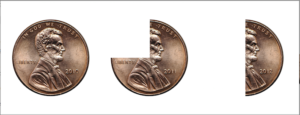06 Aug 2014 Federal Reserve Policy: Robbing the Poor to Feed the Rich
Note: This post was written by NCPPR’s intern, Scott Alford.
Income inequality is poised to be the defining issue of America’s next few election cycles. Yet, few political leaders understand that one of the most influential sources of inequality originate from the contradictory central planning at the Federal Reserve. Bad Federal Reserve policies, in the long run, make the value of our money worth less and lower the standard of living for middle and lower class families.
 Since its inception as the United States monetary monopoly over a hundred years ago, the Federal Reserve Banking system has attempted to stabilize the American economy through two main goals: maximizing employment and maintaining price stability. However, the means to these goals are often mutually exclusive. Maximum employment requires artificially low interest rates while price stability require modest market interest rates. But with the Great Recession of 2008, political incentives pushed the Federal Reserve Chairman Ben Bernanke toward valuing maximizing employment over price stability. Once again, economic prosperity was compromised for political expediency.
Since its inception as the United States monetary monopoly over a hundred years ago, the Federal Reserve Banking system has attempted to stabilize the American economy through two main goals: maximizing employment and maintaining price stability. However, the means to these goals are often mutually exclusive. Maximum employment requires artificially low interest rates while price stability require modest market interest rates. But with the Great Recession of 2008, political incentives pushed the Federal Reserve Chairman Ben Bernanke toward valuing maximizing employment over price stability. Once again, economic prosperity was compromised for political expediency.
While low interest rate policies do stimulate employment, they also raise the cost of living and devalue the wages of the middle class and poor. To create stimulus in the economy, the Federal Reserve provides low interest rates to incentivize large banks to borrow credit which, in turn, encourages local banks to loan out more money.
Typically, creditworthy citizens—many of them wealthy—are the first to borrow this money and with it they purchase goods and services at the lower pre-inflation price. However, by putting more money into circulation, they have “proceeded to bid up the prices of assets and resources, while everyone else has watched their purchasing power decline.”
The lower and middle classes will be the victims of the Federal Reserve’s low interest rates. These classes now have to bear the greater cost of goods like milk and bread and cell phones. This harms the poor the most for they are the ones who can least afford higher prices. Furthermore, the wages of the middle and lower classes seldom increase fast enough to cover the increase in prices. The end result is that the Federal Reserve allows the wealthy to amass wealth at lower prices while stealing value from lower classes.
Hedge fund founder Mark Spitznagel explained the Feds “coercive redistribution has been a far more egregious source of disparity than the president’s presumption” of tax unfairness. If politicians truly desire a more just and prosperous economic system, the government should address the Federal Reserve’s low interest rates. Without reform, the Federal Reserve low interest rate policies will continue to exacerbate income equality while harming economic prosperity.



